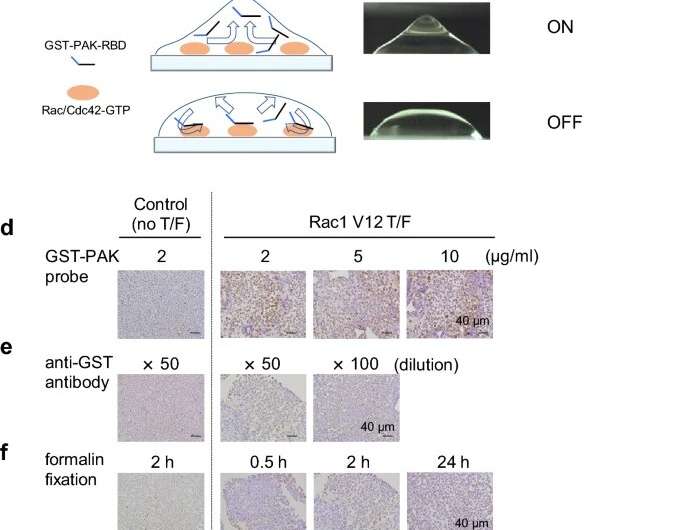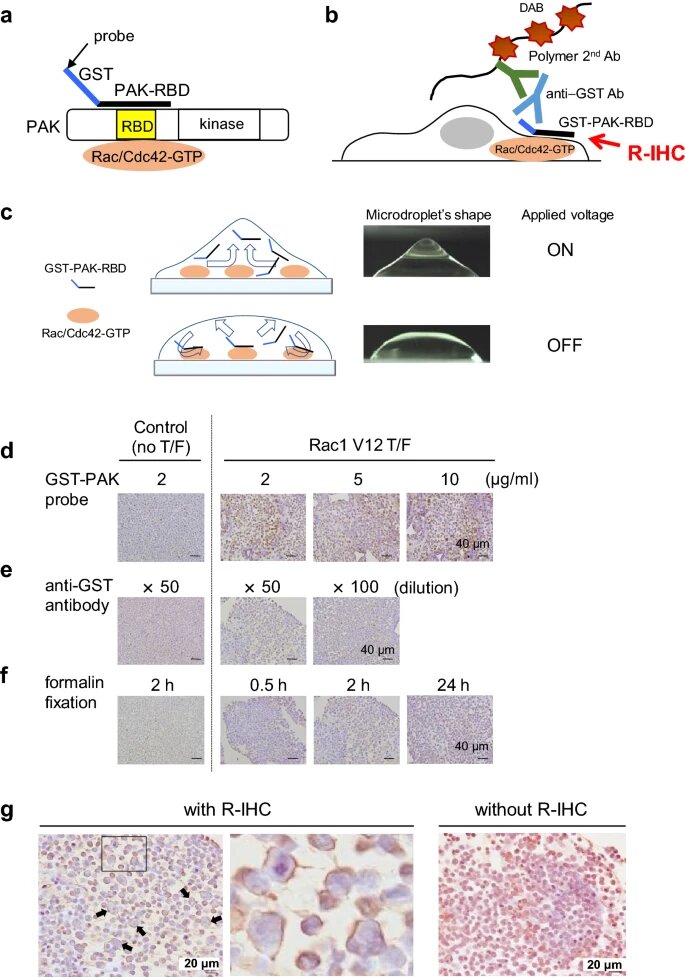
Rac and Cdc42 are well-studied low molecular weight G proteins that regulate the ability of cancer cells to move, which is called their motility and invasive capacity. The more active these molecules are, the greater the ability of cancer cells to move. This also makes it more likely that diseased cells will invade and metastasize in blood and lymph vessels.
Until now, the motility and invasive capacity of cancer cells had only been assessed biochemically with a method called Rac/Cdc42 pull-down assay. However, when using this approach, the positional information within the cancer tissue is completely lost, and it is also impossible to evaluate the heterogenicity of the cells (how different they are from each other).
For the first time, a research group including Professor Shinya Tanaka and Associate Professor Masumi Tsuda of the Department of Cancer Pathology, Faculty of Medicine, Hokkaido University/Institute for Chemical Reaction Design and Discovery (WPI-ICReDD), evaluated the motility and invasive capacity of cancer cells in cancer tissue sections removed from colorectal cancer patients. The study has been published in Scientific Reports.
The researchers used a recently developed non-contact agitation technology in which alternating electrical fields are used to “stir” liquid droplets at extremely high speeds. With this approach, the group found that they were able to rapidly and specifically evaluate the motility and invasive ability of colon cancer cells by agitating a solution containing molecular probes that bind to activated Rac/Cdc42 on cancer tissue sections. Such sections are called formalin-fixed paraffin-embedded (FFPE) specimens and are routinely used for physical diagnosis.
Their evaluations revealed many insights about the Rac/Cdc42 activity of cells. (a) First, that it was significantly higher in the tumor area than in the normal mucosa of the colon. (b) Moreover, the more advanced the cancer cell stage, the greater the increase in Rac/Cdc42 activity. (c) This increase was particularly high at the leading edges of the tumor, where cancer cells infiltrate the surrounding healthy tissue. (d) Additionally, in cases where Rac1/Cdc42 activity was high, there was a strong tendency for lymphatic invasion.
Source: Read Full Article
